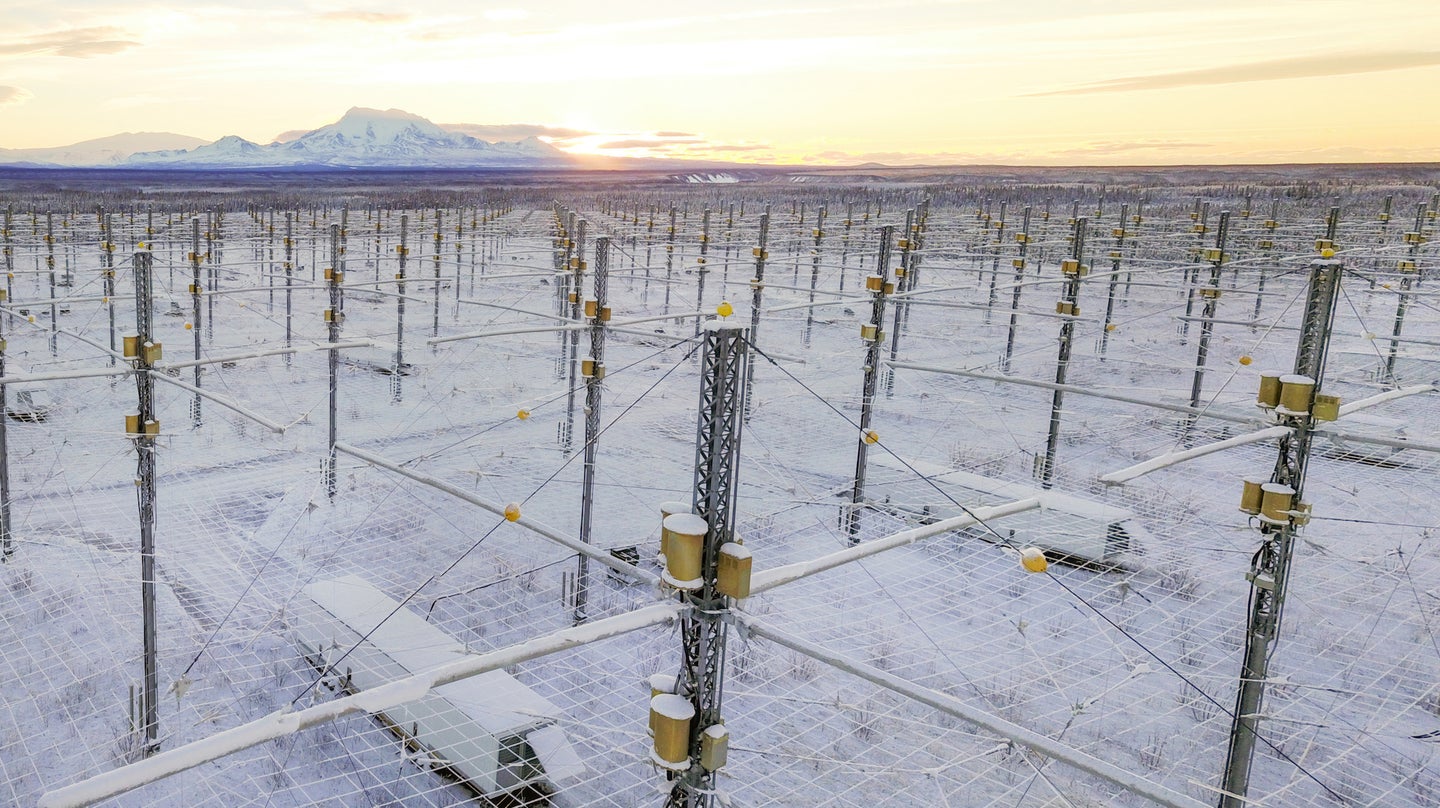Why scientists used these radio transmitters to create artificial auroras
Sending radio pulses into the upper atmosphere can create splotches of red and green light.

If you live in and around Gulkana, Alaska and recently saw some eerie lights in the sky—don’t worry; they were all part of a science experiment. Earlier this week, researchers from the University of Alaska Fairbanks and several other US institutions created artificial auroras by sending radio pulses into the Earth’s ionosphere using HAARP (High Frequency Active Auroral Research Program) transmitters on the ground. The frequencies of these transmissions were between 2.8 and 10 megahertz.
These transmitters act as heaters that excite the gasses in the upper atmosphere. When the gasses “de-excite,” they produce an airglow between 120 and 150 miles above ground, according to a notice about the project issued by the HAARP team. This is similar to how charged particles from the sun interact with gasses in the upper atmosphere to create natural auroras; the charged particles are steered by the Earth’s magnetic field to the north and south poles to form aurora borealis and aurora australis. Compared to those light displays, the artificial auroras are much weaker.
So why did the researchers do all this? Studying this artificial airglow may provide insights on what happens when real aurora lights appear.
If you noticed a faint red or green splotch in the sky above Alaska between November 4 and November 8, chances are good that you saw the experiment in progress. HAARP also notes in its FAQ that these ionosphere-heating experiments have no detectable effects on the environment after 10 minutes or so.
[Related: Why NASA will launch rockets to study the eclipse]
Additionally, the team also wants to understand how these superheated gasses in the ionosphere interact with each other. Insights into these dynamics could inform collision detection and avoidance features for satellite systems. Gathering more intel on auroras and other upper atmosphere phenomena like it can help scientists see how weather and particles from space are interacting with the environment around Earth, and how energy is transferred during these events.
Disturbing the ionosphere is not the only way to study auroras. Launching rockets into the ionosphere, which sits just at the edge of space, is another popular approach.
The goal of HAARP is to research the physical and electrical properties of the Earth’s ionosphere as it pertains to surveillance, military and civilian communications, as well as radar and navigation systems. Outside of studying auroras, HAARP has used its antenna array to peer inside a passing asteroid, observe solar storms, and conduct other tests related to space physics. Beyond the Earth, the team’s ambitions extend to the moon and to Jupiter.
HAARP has had an interesting history. Despite conducting serious science, around 2014, controversy and conspiracy brewed around the program’s mysterious antenna field, then run by the US military, prompting scientists to host open houses with the public explaining what they can and can’t do with their technology. Its image problem remains despite the changes in ownership over the years.